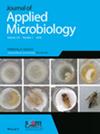摘要
目的:重金属的开采导致周围农田土壤的环境污染。利用功能微生物和生物炭可降低重金属富集土壤中农作物的重金属浓度。本文以 9311 水稻品种为模式植物,研究了生物炭固定化功能微生物材料对减少植物体内重金属(Sb、Cr、Pb 和 Cd)积累的影响及其内在机制:评估了三种修复材料(枯草芽孢杆菌(BS)、椰壳生物炭(bc)和固定枯草芽孢杆菌的生物炭(MIX))对水稻重金属积累、根瘤微生物多样性和新陈代谢的影响。所有三种处理(BS、bc 和 MIX)都显著提高了水稻植株的产量,减少了水稻中重金属的积累。在所有三种试验处理中,MIX 组对重金属富集的降低幅度最大,同时也提高了作物产量。16S rRNA 分析显示,MIX 处理显著改变了一些非优势菌(如 Spirochaeta、RB41、S0134 和 Bryobacter)的丰度。LC-MS 分析表明,与对照组相比,BS、bc 和 MIX 处理组分别有 35、94 和 74 种不同的代谢物,主要包括酯类、氨基酸及其衍生物、酮类和萜类化合物。MIX 组对水稻中涉及嘌呤代谢、乙醛酸和二羧酸代谢以及苯丙类生物合成的代谢途径有显著影响。MIX 处理的总体效果优于分别施用 BS 和 bc 的效果:结论:在锑污染的农田中施用 BS、bc 和 MIX 处理可提高水稻产量并减少重金属的吸收。MIX 处理的总体效果优于 BS 和 bc 处理。这三种处理方法对水稻根圈生物多样性或根圈优势菌结构没有明显影响,但对水稻根部的非优势菌和根系代谢有影响。Aim: The mining of heavy metals leads to environmental pollution in the soil of surrounding farmland. A method for reducing heavy metal concentrations in crops grown on heavy metal enriched soils is utilizing functional microorganisms and biochar. The 9311 rice variety was used as a model plant to investigate the effects and underlying mechanisms of biochar immobilized functional microbial materials on reducing the accumulation of heavy metals (Sb, Cr, Pb, and Cd) in plants.
Materials and methods: Three remediation materials including Bacillus subtilis (BS), coconut shell biochar (bc), and biochar immobilized B. subtilis (MIX) were evaluated for their effects of heavy metal accumulation, rhizosphere microbial diversity, and metabolism in rice. All three treatments (BS, bc, and MIX) significantly increased the yield of rice plants and reduced the accumulation of heavy metals in rice. The MIX group reduced heavy metal enrichment the most in all three test treatments while also increasing crop yield. The 16S rRNA analysis revealed that the MIX treatment significantly altered the abundance of some non-dominant bacteria (e.g. Spirochaeta, RB41, S0134, and Bryobacter). The LC-MS analysis showed that compared to the control group, the BS, bc, and MIX treatment groups had 35, 94, and 74 differential metabolites respectively, mainly including esters, amino acids and their derivatives, ketones, and terpenoids. The MIX group had a significant effect on the metabolic pathways involved in purine metabolism, glyoxylate and dicarboxylate metabolism, and phenylpropanoid biosynthesis in rice. The overall effect of the MIX treatment was superior to that of applying BS and bc separately.
Conclusion: The application of BS, bc, and MIX treatments in Sb-contaminated farmland can increase rice yield and reduce the absorption of heavy metals. The overall effect of the MIX treatment is superior to applying each separately (BS and bc). These three treatments had no significant effect on the rhizosphere biodiversity or the dominant bacterial structure of the rice rhizosphere but had an impact on non-dominant bacteria and root metabolism in rice roots.

 求助内容:
求助内容: 应助结果提醒方式:
应助结果提醒方式:


